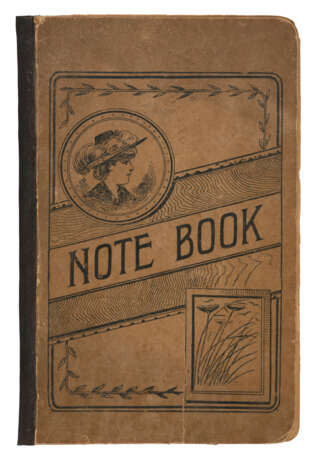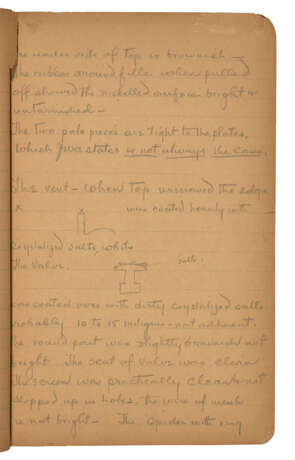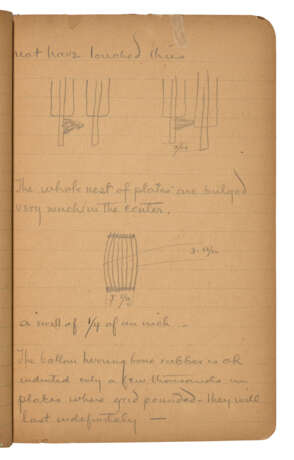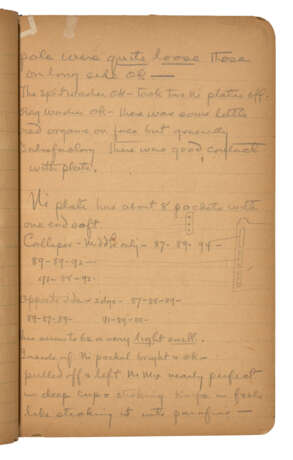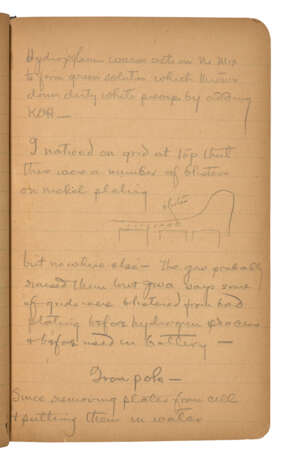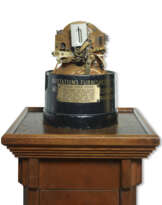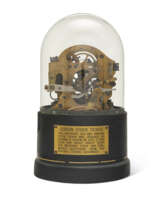ID 1109122
Lot 321 | Thomas Alva Edison (1847-1931)
Estimate value
£ 30 000 – 50 000
Autograph manuscript, a laboratory notebook, [probably Menlo Park, New Jersey], [c.1899-c.1910]
28 written pages, 220 x 140mm, in pencil in a ruled school notebook, inked over by another hand in places, illustrated by Edison with 14 diagrams, some later additions in pencil in a juvenile hand, annotated on p.1 ‘Thomas A Edison Notebook’. Provenance: Robert B. Honeyman (1897–1987, American metallurgical engineer and book collector); his sale, part III, Sotheby’s, 2 May 1979, lot 1159.
One of Thomas Edison’s laboratory notebooks, recording experiments relating to the development of the alkaline storage battery – intended for use in electric vehicles – and illustrated with 14 diagrams. Formerly in the Honeyman Collection. Recording experiments made with electrical batteries and describing the practical difficulties encountered with the construction and operating performance of each cell: ‘This is the cleanest solution of all the cells – the sediment is scarcely anything. There is no flocculent float, or muddy tinge’; ‘Important. The two little holes leading out of valve chamber are plugged entirely with crystalized salt’; ‘By straining the poles sidewise the Fe pole could be bent at angle but considerable power necessary’; ‘The Ni & Fe plates are beautifully bright’; ‘Important When the cell was assembled & separators put in the friction was so great that when they were put in a cell […] the nickel plates were the lowest, but it was a one sided cant as they are lower on one side’; ‘The bottom herringbone rubber is OK indented only a few thousands in places where grid pounded – they will last indefinitely – Altogether the cell is in perfect condition mechanically and chemically exception corrosion of post in Ni side where soft rubber gasket was, after washing post looks eaten away slightly say .003 – will examine later – The herringbone rubber bottom, the side rubber slotted guards & the sheet rubber are coated all over with an iron yellow deposit. it rubs off…’
At the turn of the 20th century Thomas Edison’s newest challenge was to develop a better storage battery for use in electric vehicles. Edison very much enjoyed automobiles and owned a number of different types during his life, powered by gasoline, electricity, and steam. He thought that electric propulsion was clearly the best method of powering cars, but realised that conventional lead-acid storage batteries were inadequate for the job. Edison began to work on an alkaline battery in 1899. He had some success – his Nickel-Iron battery was developed in 1901 – but this would prove to be Edison's most difficult project: it took ten years to develop a practical alkaline battery. By the time he introduced his new battery, the gasoline powered car had so improved that electric vehicles were becoming increasingly less common, being used mainly as delivery vehicles in cities. However, the Edison alkaline battery proved useful for lighting railway cars and signals, maritime buoys, and miners lamps. Unlike iron ore mining, the heavy investment Edison made over ten years was repaid handsomely, and the storage battery eventually became Edison's most profitable product. Further, Edison's work paved the way for the modern alkaline battery (see NHP-New Jersey online biography).
| Artist: | Thomas Edison (1847 - 1931) |
|---|---|
| Place of origin: | USA |
| Artist: | Thomas Edison (1847 - 1931) |
|---|---|
| Place of origin: | USA |
| Address of auction |
CHRISTIE'S 8 King Street, St. James's SW1Y 6QT London United Kingdom | |||||
|---|---|---|---|---|---|---|
| Preview |
| |||||
| Phone | +44 (0)20 7839 9060 | |||||
| Buyer Premium | see on Website | |||||
| Conditions of purchase | Conditions of purchase |
